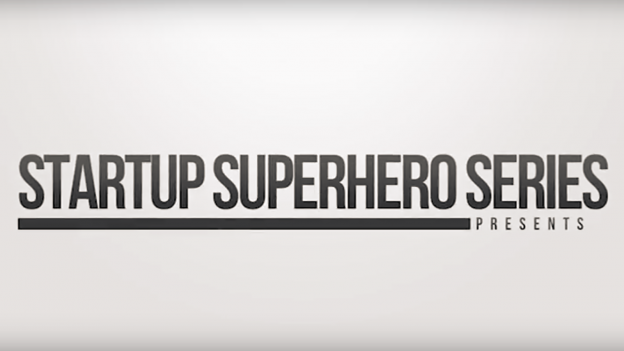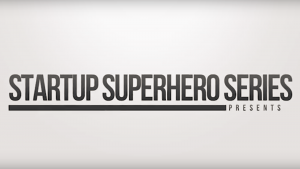
Startup Superhero Video Series! – This Week Featuring Caroline Cherkassky on “Convertible Notes vs. SAFES vs. Priced Round”
 Stubbs Aderton & Markiles and the Preccelerator Program are proud to announce the launch of their Startup Superhero Video Series – featuring SA&M Attorneys, Preccelerator Mentors, and entrepreneurs on topics specific to entrepreneurship and lessons learned throughout the journey.
Stubbs Aderton & Markiles and the Preccelerator Program are proud to announce the launch of their Startup Superhero Video Series – featuring SA&M Attorneys, Preccelerator Mentors, and entrepreneurs on topics specific to entrepreneurship and lessons learned throughout the journey.
This week we’re featuring Stubbs Alderton & Markiles attorney Caroline Cherkassky on “Convertible Notes vs. SAFES vs. Priced Round.”
Caroline Cherkassky is senior counsel of the Firm. Caroline’s practice focuses on advising emerging growth, development stage, and middle market companies on a variety of matters, including venture capital and other financings, employee compensation, securities laws compliance, technology transactions, corporate governance, and other general corporate matters. She also advises the funds and other investors that invest in these types of companies.
_____________________
Speaker: Caroline Cherkassky
Moderator: Heidi Hubbeling
Caroline: I started my practice up in Silicon Valley, where there is lots of emerging growth work and I spent a lot of time there in Big Law. I moved to LA a couple of years ago and really enjoy being part of the boutique law scene here. My practice focuses on emerging growth companies from start-up, incorporation, documents for employees, commercial agreements, fundraising and exit and the Venture Capitals and other people who invest in these early growth companies.
Heidi: On the deal side?
Caroline: Yes, exactly.
Heidi: Okay. Let’s talk a little bit about the fundraising process one of the major lack of education for a lot of startups is the type of vehicle they should use. The type of instrument they should use, when going for funding. There’s a priced round, there’s a convertible note and there is S.A.F.E They are the standard ones for early stage companies, so talk a little bit about the differences and how each is applied.
Caroline: Sure! So, the priced round is really what most people think about when they think about venture financing. The investors in a company agree on a price, the investors write a check, the company gives them shares and they are now equity holders in the company. The investor owns a certain percentage of the company’s capitalization. They also typically get specific investor rights, company applications and lots of negotiation round specific obligations. The convertible note on the other hand is a debt instrument. It means that the investor does not get equity in the company to start with, they get a note which is an obligation that has to be repaid at maturity, but there are certain triggers in there set forth in which the note will convert into equity. Usually some sort of discount to the next round or a cap at evaluation. Last, we have the S.A.F.E which is an acronym for simple agreement for future equity and that’s exactly what it is. It’s document that sets forth the terms on which the investor will get equity in the company in the future. It’s very similar to a note in that it has typically a discount to the next round or some sort of cap in the evaluation in which the S.A.F.E will convert, but its different from a note in the sense that there is no maturity date. There’s no debt obligation and there’s no repayment. So, it is more flexible in that regard.
Heidi: Is one instrument preferred over the other?
Caroline: It really depends on the company and the circumstances. Typically, it comes down to timing and size of the round. The priced round provides a lot of certainty. The investors in the company know exactly how much equity is being exchanged and the amount of money that is being invested. Which is nice for everybody to have that certainty. On the flip side the convertible notes and S.A.F.Es can be really fast. The priced round requires a lot of documentation and often takes much higher fees and timing to negotiate. The notes and the S.A.F.Es on the other hand are pretty quick, but you lose that certainty. So, often we see that there is no hard fast number, but we often see a fluctuation point of around 1 million dollars on the side of financing where it makes sense to do that priced round.
Heidi: Are there certain pit falls that entrepreneurs should look out for each of those?
Caroline: Definitely! One of the big things is the S.A.F.Es and convertible notes they offer a lot of flexibility, but you have these caps and discounts that are negotiated and the investors and the companies don’t do the calculations to figure out how much of the company is being given around. Especially if you do multiple S.A.F.Es or convertible notes and succession, by the time you get to that priced round you may not realize how much equity has been given up. There are some founders who unfortunately, have realized too late that there has been a lot more equity. A lot of dilution.
Heidi: So, this is all important information for start-up companies as they get through their fundraising process so we appreciate you being here.
Caroline: Thanks.
_____________________
To learn more about the Preccelerator Program, contact Heidi Hubbeling at hhubbeling@stubbsalderton.com



